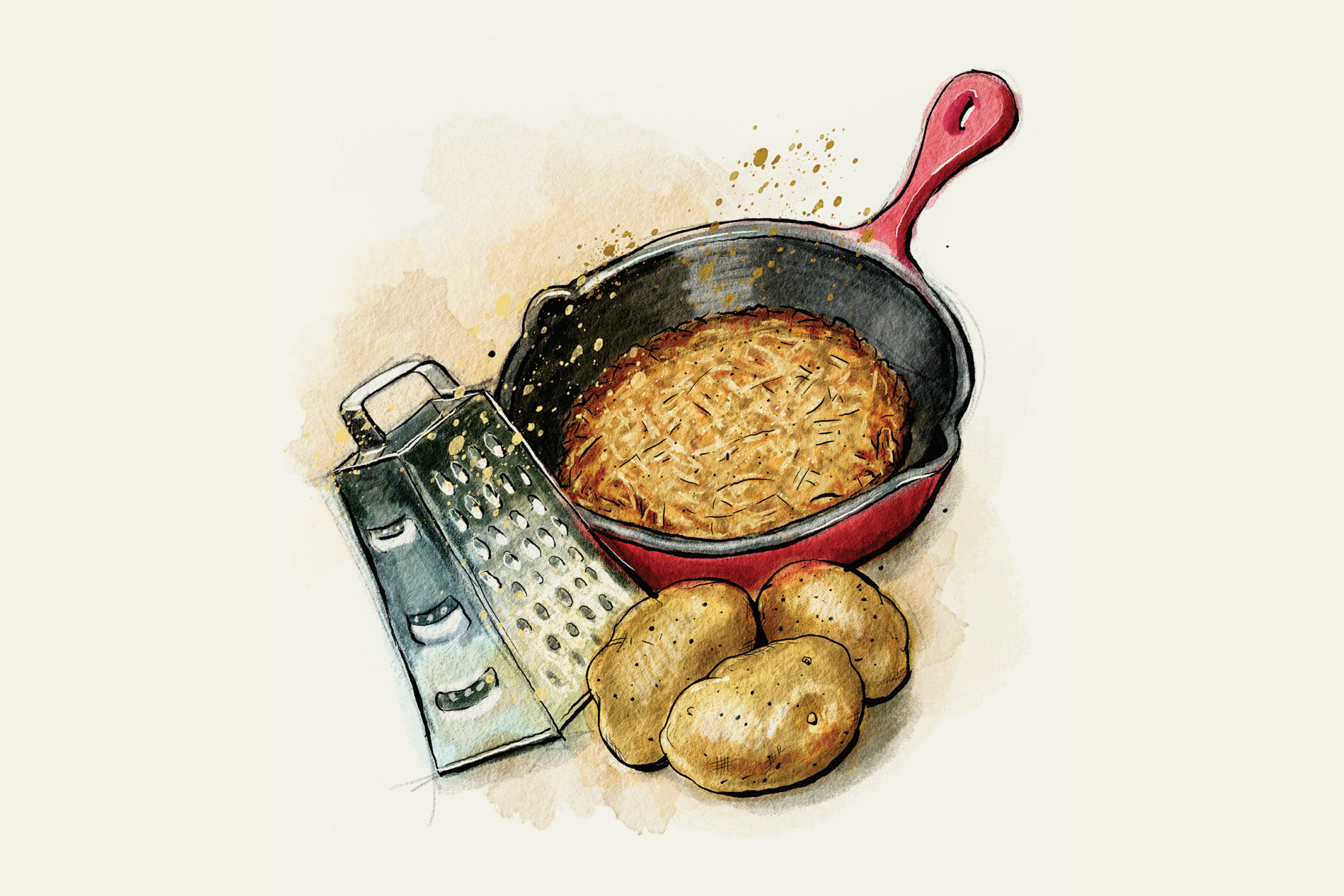
You may be forgiven, if you are a regular reader of this column, for thinking that my primary motivation in cooking is showing off. I’m always banging on about lovely dishes you can serve to unsuspecting guests that will guarantee plaudits and amazement. But while there is more than a kernel of truth in this, I think that it’s actually simpler than that: what I crave from cooking is satisfaction. And I don’t mean satiation of hunger (although that too: I am greedy), but the sense of achievement that cooking – almost – invariably brings.
True, this achievement can often be found in presenting a beautiful cake to an assembled group of people, or your new friend saying ‘You know, I think these are the best brownies I’ve ever tried’. But it can also be a solitary satisfaction that isn’t quite so bound up with flaunting your bakes.
I love cooking the most when I successfully bring together a carbonara sauce, or feel the weight of a curd thicken in the pan; when I pound out a piece of meat to an impossible breadth and thinness for schnitzel, or hear the confident hiss as I add wine to a burgeoning risotto. The moment when a Swiss meringue transforms from a soupy mess to a glossy, rich buttercream is just as celebratory as flaming a brandy-soaked Christmas pudding in front of your family.
Unless you’re on MasterChef (or have a very keen three-year-old sous chef, like I sometimes do), you’re unlikely to be watched or held accountable during these kitchen moments. They’re just part of the process, rather than the end product. But they are what makes cooking so irresistible, even when I’m tired or grumpy.
Cooking potato rösti falls into this camp for me. A rösti – a proper, full-size, frying pan-wide rösti, none of these canapé one-bite imitators – requires flipping halfway through, so that it fries and crisps on the outside, leaving the inside fluffy and soft. It isn’t hard, although there is a knack to it, and when you get it right, the culinary satisfaction is unparalleled. I get the same glee from turning out a potato rösti as I do the most towering of soufflés or perfect of puddings.
The crucial rösti flip moment is less of a pancake toss and more of a confident invert, but there are a couple of tricks to getting it right. Don’t turn it over on to a plate: you need to get this enormous, half-cooked potato cake back into the pan in one piece, and curved sides are not your friend here. Turn it on to a large board, and then shimmy it back into the pan. Don’t worry if it drifts a little – you can neaten it all up with a spatula once it’s back in place.
And while we’re talking tips, here are a few rösti don’ts. Don’t panic when you see how much potato is produced – it’s going to cook down, I promise. Don’t squeeze the potato too thoroughly after grating: you need some of the natural potato water to steam the inside of the rösti to give you the perfect balance of soft interior and golden fried exterior. And don’t bother parboiling the potatoes – it’s the strand texture which makes a rösti a rösti, rather than a mashed potato cake.
Rösti is the perfect blank canvas for any topping you fancy (or can rustle up from the fridge): pickles, cured meats, tinned fish, frazzled brassicas, a fried egg, or just a splodge of sour cream and drizzle of hot sauce. But my favourite way to serve it is with a fat swoop of crème fraiche, and waves of smoked salmon piled on top and maybe, if I’m feeling fancy, some feathers of dill.
Serves 4
Takes 30 minutes
For the potato mix
- 750g Maris Piper or King Edward potatoes
- 15g butter
For cooking
- 30g butter
- 1 tbsp neutral oil
- 1 tbsp flaky salt
- Grate the potatoes (no need to peel) on the coarse holes of a box grater. Squeeze handfuls of the grated potatoes to remove most of the liquid.
- Melt the first 15g of butter, and stir it through the grated potatoes.
- Heat the remaining butter and oil in a heavy-based skillet about 20cm wide. Once the butter is melted, add the potato. Don’t squash it down, it needs to be able to steam a little – and don’t panic, it will look like loads, but it will cook down.
- Cook for 15 minutes, then slide a spatula around and underneath the edges of the rösti to ensure that it’s not stuck. Place a heat-proof board over the pan, holding both pan and board tightly, and flip, lifting the pan away.
- Slide the rösti back into the pan and cook the second side for 15 minutes.
- Turn out of the pan, and sprinkle generously with flaky salt.








Comments